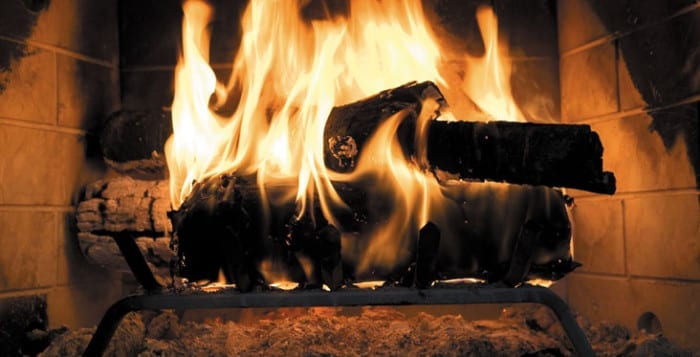By Lisa Steuer
When the holidays are finally over and January rolls around once again, it’s a time that can be overwhelming for many people. Most likely, the holidays were filled with indulgences, a lack of exercise, pounds gained and more. Plus, a new year inspires many people to make resolutions. But all too often, those resolutions are forgotten by February.
The good news is that if you really want to make a change this year, you do possess the tools to do so — no matter what your goal may be. Adam Gonzalez, Ph.D., is the founding director of the Mind-Body Clinical Research Center and assistant professor in the psychiatry department at Stony Brook University School of Medicine. In his role as a clinical psychologist, Gonzalez provides clinical services to the community and to patients at the hospital, with a focus on a holistic way of providing care to heal the mind and body. Gonzalez and his colleagues have conducted research to support the mind-body connection and help people work on stress management skills, improve their health and set and meet behavioral goals.
So exactly why is it so difficult for so many people to actually stick to their New Year’s resolutions and make a big change? Gonzalez pointed out three main reasons: setting unrealistic goals, getting distracted or losing focus, and finally, not knowing where to start. If you want to make a big change in your life, a good way to begin is to monitor your current behavior, notice where the behavior is occurring, your thoughts and beliefs about the behavior, as well as some of the thoughts you are having while the behavior is occurring, said Gonzalez.
“If I start thinking, ‘I’m a failure, I’ll never make this change, I can’t keep up with this,’ I’m likely not to keep up with it.” — Adam Gonzalez, Ph.D.
“All of our thoughts, behaviors and emotions interact, so if you work on your thinking style or work on managing behaviors, that can affect emotions and also the behavioral outcomes,” said Gonzalez.
For instance, if someone wants to make changes in their sleep, Gonzalez would have them monitor how much sleep they are currently getting, what their current bed time is, what time they wake up, etc. If a person wants to make changes to their eating habits, that person might want to think about who these behaviors are occurring with — who are the friends he or she is going out to eat with and where, and think about whether anyone else is helping to drive that behavior.
“You want to get supportive people around you who actually can be there to help foster the behavior change that you’re looking for,” said Gonzalez. “If the people that are around you aren’t supportive, I would suggest addressing it head on: letting the individuals know what, specifically, you need from them, whether it’s something you need them to do or not do.”
One pitfall that many people fall into when trying to make a change is getting discouraged when a lapse in the behavior change occurs — examples include slipping on your diet, having a cigarette if you’re trying to quit, etc.
“The way you interpret the hiccup or lapse will have a profound effect on your next step. So don’t get discouraged or beat yourself up too hard when you have a lapse in the behavior that you’re trying to change,” said Gonzalez.
Another instance where many people get discouraged is when they make a goal to get to the gym a certain amount of times a week and then fail to meet that goal one week, Gonzalez noted.
“If I start thinking, ‘I’m a failure, I’ll never make this change, I can’t keep up with this,’ I’m likely not to keep up with it,” said Gonzalez. “First is recognizing it for what it is — that you missed two days this week and next week you’re going to be going to the gym the four days you wanted … or, it’s re-evaluating the goal and your plans. Maybe four times a week … [with] your schedule is a little too intense. So maybe it’s scaling back your goals and making it something that’s more attainable.”
And once you reach your goal, how do you stay motivated? Many people, after losing weight for instance, may find it difficult to stay on the path and instead go back to old habits.
 “It’s important to consistently remind yourself of why the goal is important,” said Gonzalez. “So it’s building up motivation in your mind, and sometimes we will recommend that people put Post-its around that might have motivational statements on it or something that’s very personal or relevant to them to remind them of why this goal is important.”
“It’s important to consistently remind yourself of why the goal is important,” said Gonzalez. “So it’s building up motivation in your mind, and sometimes we will recommend that people put Post-its around that might have motivational statements on it or something that’s very personal or relevant to them to remind them of why this goal is important.”
SMART goal-setting
Gonzalez shared the SMART goal-setting technique, which is used in programs at Stony Brook’s Mind-Body Clinical Research Center:
Specific: Make sure your goals are straightforward, specific, and emphasize what you want to happen. “So you don’t want to just say, ‘I want to lose weight.’ It’s good to be specific and say, ‘I want to lose 10 pounds,’” said Gonzalez.
Measurable: Make a goal that you can make measurable progress on so that you can see the change occurring, and set time frames so that you can see if you’re reaching your goal or not.
Attainable: Identify goals that are most important to you and aren’t too far out of reach. “Losing 50 pounds in three months is probably a stretch, so you want to make sure it’s something attainable,” said Gonzalez.
Relevant: The goal should be something that you’re really willing to put effort in and work toward.
Time-based: Setting a time frame can be very helpful in achieving goals. Plus, setting long- and short-term goals can help you achieve them. For instance, set a short-term goal of losing five pounds. Once you meet that goal, it can motivate you to keep making progress toward a larger weight-loss goal.














